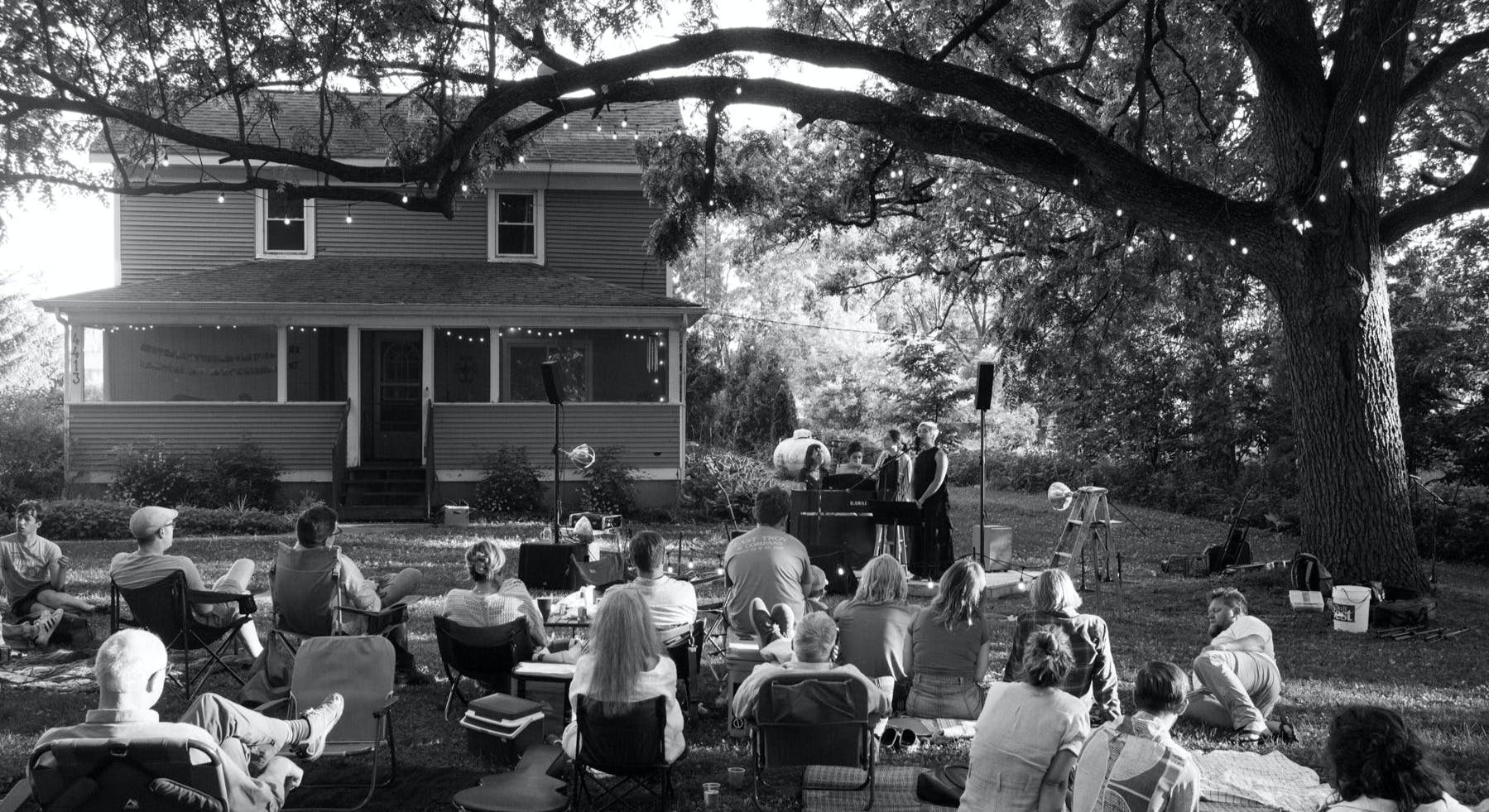|
|
Every year around the longest day of the year, a miracle happens right in front of my house. Beneath long strings of twinkle lights draped across the the oldest black walnut on the block, music rings into the night. Not just any music. The music of miracles.
Technically speaking, you might say it’s not miraculous, it’s just what the sociologist Emile Durkheim called collective effervescence, this week’s fancy term to change the world. But collective effervescence is one of those phenomena—like the communication of trees or the evolution of hermit crabs—that we might just as well name honestly as miraculous.
What makes this solstice music on my front lawn miraculous isn’t the skill of the musicians. Years ago our dear friends Jake and Kate started this annual event, and the core idea is that anyone, little jumping tots to cancer-ridden elders, can contribute. We’ve witnessed jaw-dropping talent right alongside some atrocious awkwardness. What makes this all miraculous is simply the way a shared ritualized gathering brings people into harmony. As the darkness settles, our sighs, guffaws, sniffles, heartbeats, and the very values that vitalize these begin to vibrate in shared rhythms that knit together previous strangers and dearest friends. This is collective effervescence.
You’ve felt collective effervescence if you’ve found yourself thumping a stranger on the back in the excitement of a sports match. You’ve felt it if a faith community gathering ever brought a lump to your throat. I suspect it had something to do with Jesus feeding 5,000 hangry people. Collective effervescence drills shared values deeper into every individual involved, at the same time stringing connections one to another.
Notice there’s danger in collective effervescence, too. That collective energy indiscriminately amplifies whatever values it latches onto, creating lynch mobs as well as tent revivals. In heightening the commonality of insiders, it can also make enemies of outsiders.
This potential for good or evil means we need to pay attention to the power of collective effervescence. As one of humanity’s oldest technologies for social change, it still requires as much ethical attention as new technologies like CRSPR and AI.
This week I invite you to consider what ritual gatherings you take part in, and how these can harness the power of collective effervescence for building diverse and flourishing communities. It might help to hear from Robin Wall Kimmerer, Potawatomi biologist and author, who describes a tradition of collective effervescence in her beautiful book, Braiding Sweetgrass.
Kimmerer tells of a ceremony in which Native people sang and lit fires along waterways to welcome salmon back from the ocean. These ceremonies kept alive shared values and practices of treating creation with gratitude and wonder. She writes:
Her words voice what I hope for you, for me, for the summer solstice music, and for all our best collective effervescence:
|
|
P.S. Know someone whose whose life would be a little brighter if they read this? Please forward to a friend!

